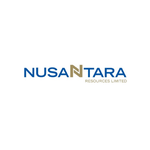Emerging Australia’s gold mines by production, grades and costs Part 3: Grade is king, but costs are the crowning glory
Published 24-MAY-2019 10:05 A.M.
|
9 minute read
Hey! Looks like you have stumbled on the section of our website where we have archived articles from our old business model.
In 2019 the original founding team returned to run Next Investors, we changed our business model to only write about stocks we carefully research and are invested in for the long term.
The below articles were written under our previous business model. We have kept these articles online here for your reference.
Our new mission is to build a high performing ASX micro cap investment portfolio and share our research, analysis and investment strategy with our readers.
Click Here to View Latest Articles
In the final part of this three part series about AISCs, we examined five emerging gold stocks that had the potential to transition to low-cost miners due to the various characteristics of the resources identified to date.
We highlighted the potential low-cost features of projects being explored and/or developed by Bellevue Gold (ASX:BGL), Dateline Resources (ASX:DTR), EganStreet Resources (ASX:EGA), Kingston Resources (ASX:KSN) and Mako Gold (ASX:MKG).
Of course, this assessment looked closely at those factors that often assist in driving down production costs, otherwise referred to in the mining industry as all in sustaining costs (AISC).
When it comes to low-cost mines, some common denominators are large-scale projects with easily accessible high grade mineralisation, which often translates into more economical open pit mining rather than capital intensive underground operations.
The other key factor we mentioned was the substantial benefits of by-products, usually referred to as credits where other minerals can be economically extracted and processed.
In the case of gold mines, this secondary metal is often copper and there were some classic examples in part one, including Evolution Mining’s Ernest Henry mine where revenues from the sale of copper exceeded operating costs leading to a negative AISC.
Today, we examine the remaining five gold stocks looking for the next Ernest Henry.
Nusantara Resources
Nusantara Resources Ltd (ASX:NUS) is a gold development company with its flagship asset comprising the 1.1 million-ounce Ore Reserve and 2.0 million-ounce Mineral Resource Awak Mas Gold Project in South Sulawesi, Indonesia.
The project has over 135 kilometres of drilling completed in more than 1,100 holes, providing the group with a good understanding of the area’s geological features, an essential element in establishing a successful mining strategy.
Nusantara’s strategy is to grow the resource base and support a mining operation beyond the initial project life of 11 years.
While a long mine life is favourable and something that most of the majors strive for, the company will be looking to maximise production on a year by year basis rather than simply extending mine life.
A DFS completed by the company supports production of approximately 100,000 ounces per year, but the key takeaway was that it projected AISC of US$758 per ounce, implying a healthy margin of more than US$500 per ounce or roughly $750 per ounce in Australian dollars.
Crunching the numbers, a 7% grade uplift and an additional three years of mine life would significantly enhance project economics, resulting in a net present value of US$250 million as opposed to the current valuation of approximately US$150 million.
That would be a handy near-term goal for management to strive for.
Prodigy Gold
As we mentioned in part two, there has been an elevated interest in Prodigy Gold (ASX:PRX) since it announced a joint venture agreement for the development of the Tobruk Project in the Tanami gold fields of the Northern Territory.
Importantly, Newmont Goldcorp has a long and successful history in the Tanami area including the development of the nearby Callie Gold Mine into a world-class 14 million ounce project.
Prodigy is focusing on the Bluebush project which is along strike from Callie and the Suplejack Project 15 kilometres to the north of Northern Star’s (ASX:NST) 1.6 million ounce Groundrush Gold Deposit.
Newmont’s broader Tanami operation is sixth on the list of companies with low AISCs (see part two).
Key features of the operation are that it is an underground mine with a healthy average grade of 7.1%, and it was the third largest producer in the March quarter with 131,000 ounces.
Consequently, the key factors that could come into play for Prodigy in terms of establishing a low-cost operation are scale and grades with the latter being characteristic of most Northern Territory gold deposits.
Prodigy Gold now has more than $33 million in funding agreements from JV partners to accelerate discovery across the company’s entire exploration portfolio, including JV’s with Independence Group (70/30) and Newcrest Mining (earn-in stage) that have already generated high-quality targets which are currently being drilled.
The company’s share price is likely to be news driven in 2019, and investors should be on the lookout for drill results that reflect high-grade mineralisation.
Strategic Energy Resources
We mentioned the mix of upbeat exploration results and potential corporate activity (FMG) that could drive shares in Strategic Energy Resources Ltd (ASX:SER) higher in part two.
While the company isn’t a pure gold play, its high-quality gold and copper-gold assets, one situated in the Olympic Dam IOCG (Iron Oxide Copper Gold) corridor and the other in a highly prospective region of North Queensland, make it too good to pass over.
With regards to the former, SER was awarded an exploration licence (EL6335) in April for a landholding 60 kilometres north-east of Oz Minerals’ (ASX:OZL) prolific Prominent Hill copper-gold mine, situated in the IOCG province of South Australia.
This is one of the most economically viable mining regions in the world, courtesy of the by-product credits from gold production.
As well as Prominent Hill, Oz Minerals also has the Carapateena copper-gold project which lies to the south-east of Olympic Dam.
Highlighting the benefits of gold credits, a recent scoping study showed that the mine could produce approximately 120,000 tonnes of copper per annum at all in sustaining costs of about US$0.95 per pound, implying a healthy margin of about US$1.80 per pound based on the current copper price.
Deposits in this region have historically yielded large, long life production, a good reason to keep an eye on SER.
However, investors focused on assets that are more of a pure gold play would be impressed with SER’s Saxby Gold Project in the Mt Isa province of Queensland.
The Saxby Gold Project is the most significant gold exploration prospect in the north-east Mt Isa Province region.
Historic drilling includes high grade intersections of 17 metres at 6.75g/t gold and 15 metres at 9.09 g/t gold in two holes 190 metres apart.
Preparations for drilling are well advanced with management expecting to commence around July.
Several potential joint venture partners have conducted thorough due diligence on the Saxby project, but in the absence of a joint venture partner, SER will sole-fund the upcoming drilling program.
Once again, this is likely to be a news driven story in 2019 with numerous catalysts on the horizon.
Assay results that bear similarity to historic drilling are likely to get the company’s share price moving, as is an approach from FMG regarding the group’s Myall Creek project in South Australia’s IOCG corridor.
Looking at factors that could contribute to low AISC projects, SER has it all.
Saxby boasts high-grade near surface mineralisation with the potential for copper given Mount Isa’s history.
The group’s Myall Creek and EL6335 holdings are situated in a region that is famous for multi-commodity developments with Olympic Dam and Prominent Hill being standout performers.
Saturn Metals
Shares in Saturn Metals Ltd (ASX:STM) have increased more than 50% since April.
The company raised $1.5 million on Wednesday by way of a share placement priced at 21 cents per share with the funds to be used to accelerate a drilling program at its Apollo Hill Gold Project near Leonora in Western Australia.
Management anticipates that this will lead to an upgrade in the Mineral Resource which currently stands at 20.7 million tonnes grading 1 g/t gold for 685,000 ounces of gold.
In terms of Saturn’s ability to meet the low AISC criteria, the aggressive targeting of high-grade gold mineralisation around recently discovered shallow intersections bodes well for the company.
These included 13 metres at 5 g/t gold from 74 metres and 10 metres at 5.8 g/t gold from 46 metres.
The extension of the current lode, combined with the introduction of higher grade ore should substantially improve project economics.
There could also be share price catalysts in the offing as assays are pending for 18 recently finished reverse circulation and diamond drill holes.
Having an established resource, albeit low grade, is an advantage particularly if new high-grade feed can be introduced.
Venus Metals Corporation
In mid-April, Venus Metals Corporation (ASX:VMC) entered into a purchase agreement to acquire a combined 90% interest in two highly prospective tenements in Western Australia.
The tenements, owned by well-respected mining identity from Paynes Find, Mr Doug Taylor, and his wholly-owned company, Murchison Earthmoving and Rehabilitation Pty Ltd (MER), are Currans Find (ML 57/641) and Pinchers (ML 57/642).
VMC is purchasing a combined 90% interest in the tenements alongside joint venture partner Rox Resources Ltd (ASX:RXL), and will act as manager of the JV.
Taylor will hold the remaining 10% stake.
The two tenements are strategically important for VMC, located in the central part of the Youanmi Project within and surrounded by VMC-RXL joint venture tenements.
This is a highly prospective area as Currans Find lies along strike and only five kilometres from the high grade Penny West Deposit where a promising new discovery was made in early March, followed up by the release of outstanding early stage assay results, including 5.0 metres at 28.9 grams per tonne gold.
Consequently, the territory under exploration definitely has the potential to deliver robust grades.
It recently became evident that Venus is more than just a nearology play with Taylor having identified near surface untested strongly gold mineralised quartz reefs at Currans Find.
Just a week after the purchase agreement was negotiated, Taylor identified a near surface untested strongly gold mineralised quartz reef at Currans Find.
This reef informally named Taylor Reef occurs in an area where little historical drilling has taken place, and it therefore forms a high priority target for the upcoming drilling program.
Traditionally this area has a north-east trending reef, but this new area of mineralisation has a more easterly strike orientation, perhaps indicating that a new zone has been identified.
Upcoming drilling will be eagerly anticipated as previous exploration at Currans North and Currans has yielded high-grade results from relatively shallow depths including 3 metres at 9.2 grams per tonne gold and 1 metre at 6 grams per tonne gold.
Consequently, in terms of determining whether Venus may have snared a landholding could host a low AISC deposit, grades and the depths of mineralisation will be key components to watch as drill results come to hand.
General Information Only
S3 Consortium Pty Ltd (S3, ‘we’, ‘us’, ‘our’) (CAR No. 433913) is a corporate authorised representative of LeMessurier Securities Pty Ltd (AFSL No. 296877). The information contained in this article is general information and is for informational purposes only. Any advice is general advice only. Any advice contained in this article does not constitute personal advice and S3 has not taken into consideration your personal objectives, financial situation or needs. Please seek your own independent professional advice before making any financial investment decision. Those persons acting upon information contained in this article do so entirely at their own risk.
Conflicts of Interest Notice
S3 and its associated entities may hold investments in companies featured in its articles, including through being paid in the securities of the companies we provide commentary on. We disclose the securities held in relation to a particular company that we provide commentary on. Refer to our Disclosure Policy for information on our self-imposed trading blackouts, hold conditions and de-risking (sell conditions) which seek to mitigate against any potential conflicts of interest.
Publication Notice and Disclaimer
The information contained in this article is current as at the publication date. At the time of publishing, the information contained in this article is based on sources which are available in the public domain that we consider to be reliable, and our own analysis of those sources. The views of the author may not reflect the views of the AFSL holder. Any decision by you to purchase securities in the companies featured in this article should be done so after you have sought your own independent professional advice regarding this information and made your own inquiries as to the validity of any information in this article.
Any forward-looking statements contained in this article are not guarantees or predictions of future performance, and involve known and unknown risks, uncertainties and other factors, many of which are beyond our control, and which may cause actual results or performance of companies featured to differ materially from those expressed in the statements contained in this article. S3 cannot and does not give any assurance that the results or performance expressed or implied by any forward-looking statements contained in this article will actually occur and readers are cautioned not to put undue reliance on forward-looking statements.
This article may include references to our past investing performance. Past performance is not a reliable indicator of our future investing performance.



